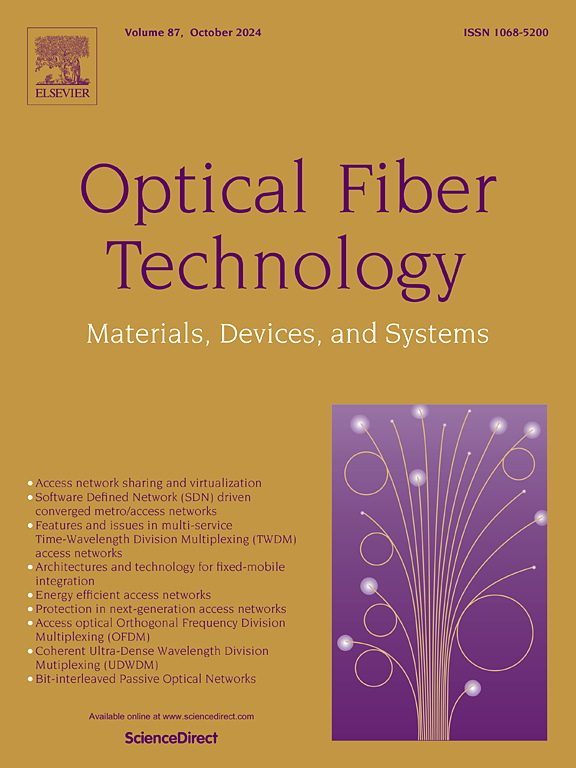Development of fiber Bragg grating underground gas flow sensor
IF 2.6
3区 计算机科学
Q2 ENGINEERING, ELECTRICAL & ELECTRONIC
引用次数: 0
Abstract
Coal mines have abundant coal seam gas reserves underground, and disasters such as coal and gas outbursts and gas explosions occur from time to time. The key work to reduce coal mining safety accidents is to use the “first pumping, then mining” method to control coal mine gas. A gas extraction flow measurement sensor was developed using fiber Bragg grating (FBG) and an orifice plate. In response to the environmental conditions and flow range of underground gas extraction, a composite strain mechanism consisting of a small-diameter throttling orifice plate and an elastic sensitive membrane was adopted. The gas flow pressure difference on both sides of the orifice plate caused deformation in the elastic sensitive unit, and the fiber Bragg grating was used to detect the deformation of the elastic sensitive unit; A dual membrane structure gas flow sensor is proposed to address the stress–temperature cross sensitivity issue in fiber optic grating strain detection. Based on the mechanical free state configuration, a secondary grating is attached to the same material as the strain grating for temperature compensation, effectively eliminating the cross sensitivity problem of the grating and improving the measurement accuracy of the sensor. The experimental results show that the nonlinear error is 1.57%, the hysteresis coefficient is 3.14%, and the repeatability error is 8.3%. The experimental results fit well with the theoretical analysis.
光纤布拉格光栅地下气体流量传感器的研制
煤矿地下煤层瓦斯储量丰富,煤与瓦斯突出、瓦斯爆炸等灾害时有发生。减少煤矿安全事故的关键工作是采用“先抽后采”的方法控制煤矿瓦斯。研制了一种采用光纤光栅和孔板的气体抽提流量测量传感器。针对井下瓦斯抽采的环境条件和流量范围,采用了由小直径节流孔板和弹性敏感膜组成的复合应变机构。孔板两侧气体流动压力差引起弹性敏感单元变形,采用光纤布拉格光栅检测弹性敏感单元变形;针对光纤光栅应变检测中的应力-温度交叉灵敏度问题,提出了一种双膜结构气体流量传感器。基于机械自由态结构,在与应变光栅相同的材料上附加一个二次光栅进行温度补偿,有效地消除了光栅的交叉灵敏度问题,提高了传感器的测量精度。实验结果表明,非线性误差为1.57%,滞后系数为3.14%,重复性误差为8.3%。实验结果与理论分析吻合较好。
本文章由计算机程序翻译,如有差异,请以英文原文为准。
求助全文
约1分钟内获得全文
求助全文
来源期刊

Optical Fiber Technology
工程技术-电信学
CiteScore
4.80
自引率
11.10%
发文量
327
审稿时长
63 days
期刊介绍:
Innovations in optical fiber technology are revolutionizing world communications. Newly developed fiber amplifiers allow for direct transmission of high-speed signals over transcontinental distances without the need for electronic regeneration. Optical fibers find new applications in data processing. The impact of fiber materials, devices, and systems on communications in the coming decades will create an abundance of primary literature and the need for up-to-date reviews.
Optical Fiber Technology: Materials, Devices, and Systems is a new cutting-edge journal designed to fill a need in this rapidly evolving field for speedy publication of regular length papers. Both theoretical and experimental papers on fiber materials, devices, and system performance evaluation and measurements are eligible, with emphasis on practical applications.
 求助内容:
求助内容: 应助结果提醒方式:
应助结果提醒方式:


